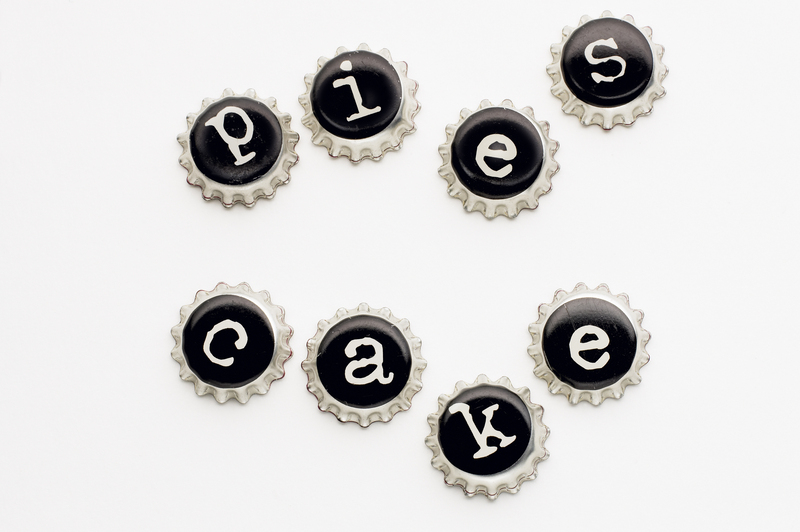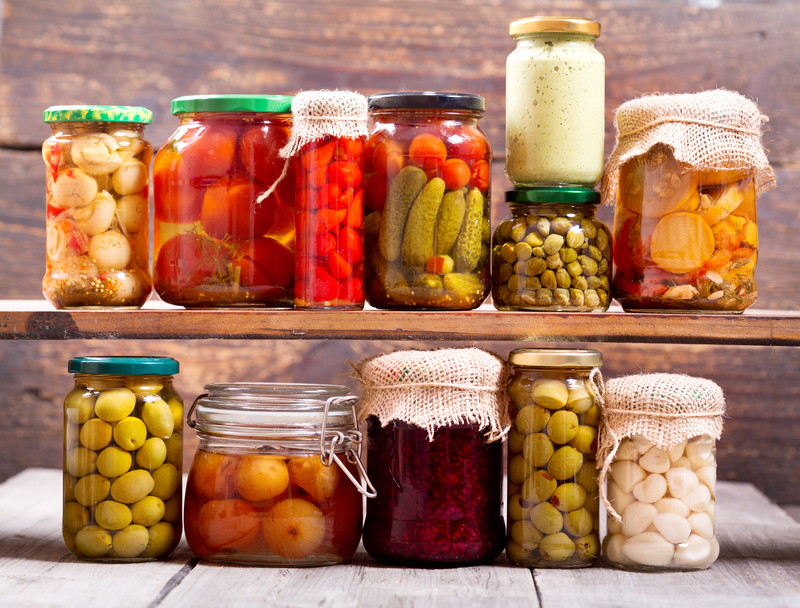Which Plastics Pose Risks? Avoid These To Stay Safe
Plastics have become an inescapable part of our modern lives--from the bottles we drink from to the packaging that guards our food. Concerns about plastic safety, however, have been rising as more people realize that not all plastics are created equal. So, which plastics pose risks? Understanding the types of plastics to avoid is essential to protect yourself and your family from potential health threats. In this comprehensive guide, we'll explore which plastics can be harmful and what you can do to make safer choices every day.
Understanding Different Types of Plastics
Before diving into which plastics are dangerous, it's crucial to understand that plastics are classified into categories based on their chemical makeup. These categories are typically denoted by a recycling number (1 to 7) found inside the recycling triangle symbol on the bottom of plastic products. Each type has a specific application, risk level, and environmental impact.
The Seven Plastic Types and Their Safety Levels
- Polyethylene Terephthalate (PET or PETE) - #1
- High-Density Polyethylene (HDPE) - #2
- Polyvinyl Chloride (PVC) - #3
- Low-Density Polyethylene (LDPE) - #4
- Polypropylene (PP) - #5
- Polystyrene (PS) - #6
- Other (often Polycarbonate, BPA-containing) - #7
Some plastics are considered relatively safe for food and beverage use, while others have been linked to the leaching of hazardous chemicals, hormonal disruptions, and environmental problems. Let's analyze each type and identify the risky plastics you should avoid to stay safe.

High-Risk Plastics: The Ones to Avoid
Not every plastic is equally hazardous. However, government and health agencies consistently flag certain types as being potentially dangerous--particularly when used to store food, drinks, or when exposed to heat.
1. Polyvinyl Chloride (PVC) - #3
Polyvinyl Chloride, commonly referred to as PVC, is widely used in industrial and household applications--from plumbing pipes to cling wraps and some toys. While PVC itself may seem innocuous, it often contains phthalates and other additives to make it more flexible. These chemicals can leach out over time, especially when the plastic is heated or comes into contact with fatty foods.
- PVC may release vinyl chloride, a known human carcinogen, during its production and disposal.
- Phthalates have been linked to hormone disruption, reproductive problems, and developmental issues in children.
- Heating or microwaving food in PVC-based plastic wraps or containers increases the risk of toxic chemical migration into your food.
Key Tip: Always avoid plastics with the recycling code #3, especially when it comes into contact with food or drinks. If you use cling film, try to find "PVC-free" versions or switch to alternatives like beeswax wraps.
2. Polystyrene (PS) - #6
Polystyrene is found in foam cups, plates, takeout containers, meat trays, and packing peanuts. Commonly known as Styrofoam, this plastic is popular due to its insulation properties and low cost. However, it is one of the most problematic plastics from a health and environmental perspective.
- Polystyrene contains styrene, a chemical that has been classified as a possible human carcinogen by the International Agency for Research on Cancer (IARC).
- The ability of PS to leach styrene is increased by heat, so hot foods or drinks in foam cups can be especially risky.
- Studies suggest styrene exposure may adversely affect the nervous system.
- PS is non-biodegradable and a major pollution source in marine environments.
Key Tip: Avoid using Styrofoam cups and food containers, especially for hot beverages or dishes. Choose paper, glass, or stainless steel alternatives whenever possible.
3. Polycarbonate (PC) and "Other" (#7 Plastics)
Category #7 is a catch-all for plastics that don't fit into the other groups. Many are made with polycarbonate, which may contain BPA (Bisphenol A), an industrial chemical used since the 1960s to harden plastics.
- BPA can leach from containers, especially when exposed to heat or acidic foods and drinks.
- BPA is a known endocrine disruptor linked to a variety of health issues: reproductive harm, heart disease, diabetes, and developmental problems in children.
- Even products labeled "BPA-free" may contain similar chemicals (BPS, BPF) that have comparable health effects.
Key Tip: Shun plastics marked with a #7--unless they specifically say "BPA-free" and are made with safer alternatives like Tritan or PLA. Prefer glass, stainless steel, or certified safe reusable plastics for food and drink storage.
Moderate-Risk Plastics: Use with Caution
While the following plastics aren't considered as risky as #3 (PVC), #6 (PS), and #7 (PC/BPA), there are still situations where you should be cautious:
Polyethylene Terephthalate (PET or PETE) - #1
Used for most single-use water and soda bottles, PET is generally considered safe for one-time use. However, repeated use, exposure to heat, or rough handling can result in the leaching of antimony, a toxic chemical used in PET manufacturing.
- Do not reuse PET bottles, especially for hot liquids.
- Avoid exposing PET bottles to sunlight or high temperatures (like leaving them in the car), which increases chemical migration.
Lower-Risk Plastics: Safer Choices but Still Use Wisely
High-Density Polyethylene (HDPE) - #2
Used in milk jugs, detergent bottles, and some reusable water bottles, HDPE is considered one of the safest plastics. It has low risk of leaching and is resistant to moisture, chemicals, and impact.
Low-Density Polyethylene (LDPE) - #4
Common for bread bags, squeeze bottles, and other food wraps, LDPE is flexible and less likely to leach chemicals. However, be cautious when using LDPE in the microwave, as high temperatures may increase chemical migrations.
Polypropylene (PP) - #5
Found in yogurt containers, takeout meals, and microwave-safe containers, PP is heat-resistant and durable. Health agencies agree this plastic is among the safest for food storage. However, always replace containers that are coming apart, stained, or heavily scratched.
Why Do Some Plastics Pose More Risks?
Plastics are made using additives--chemicals that provide flexibility, durability, and specific features. The downsides? Many additives, such as phthalates, BPA, and styrene, have been linked to adverse health outcomes. Heat, sunlight, and acidic or fatty foods can accelerate the migration of these harmful chemicals into food and drinks.
Potential Health Effects of Unsafe Plastics
- Hormone disruption: Certain chemicals mimic or block hormones, impairing reproductive health and increasing risks of certain cancers.
- Developmental and behavioral issues: Children are particularly vulnerable to neurotoxic plastic additives, which may cause learning and attention problems.
- Increased risk of chronic diseases: Some studies suggest links between certain plastics and obesity, diabetes, and heart disease.
How to Identify and Avoid Dangerous Plastics
Being a savvy consumer doesn't have to be complicated. Here's how you can avoid plastics that pose health risks:
- Check the recycling codes--avoid #3 (PVC), #6 (PS), and #7 (unless labeled as "BPA-free" and made with safe materials).
- Don't microwave food in plastic containers unless they are marked microwave-safe and made of HDPE or PP.
- Avoid storing hot or acidic foods in plastic; use glass or stainless steel containers instead.
- Replace worn, cracked, or discolored plastics; damage can increase chemical leaching.
- Limit the use of single-use plastics, especially bottles and wraps.
- Choose "phthalate-free" and "BPA-free" when possible; but be critical, as some "BPA-free" alternatives may also pose risks.
Environmental Risks of Hazardous Plastics
Beyond personal health, plastics like PVC, PS, and certain #7 products present significant environmental hazards. Improper disposal leads to microplastic pollution, wildlife ingestion, and toxic chemical release during decomposition or incineration.
- Styrofoam is among the most persistent forms of litter, polluting beaches and marine environments for hundreds of years.
- PVC releases dangerous dioxins when burned--these are persistent organic pollutants harmful to humans and nature.
Making Safer Choices: Alternatives to Risky Plastics
Switching away from risky plastics doesn't mean sacrificing convenience. More and more, consumers have access to safer and more sustainable alternatives. Here are some smart swaps you can make:
- Use glass containers or stainless steel bottles for food and drink storage.
- Opt for food-grade silicone (free from BPA, phthalates) which is flexible, heat-resistant, and durable.
- Invest in beeswax wraps instead of plastic cling film.
- Choose reusable cloth bags and avoid plastic shopping bags of unknown composition.
Eco-Friendly and Safe Plastics: What to Look For
- HDPE (#2) and PP (#5): These plastics are generally regarded as safe and recyclable. Just be sure to use them as intended.
- Compostable plastics made from PLA (polylactic acid): These are made from plant sources and break down more safely in composting environments. However, they require industrial composting facilities to degrade efficiently.

Frequently Asked Questions about Plastic Safety
What does "microwave-safe" plastic mean?
Microwave-safe plastics are engineered not to melt or warp under typical microwave temperatures. However, this doesn't guarantee that no harmful chemicals will leach out. When in doubt, use glass or ceramic instead.
Is "BPA-free" plastic always safe?
"BPA-free" simply means one specific chemical isn't present. Some manufacturers replace BPA with similar chemicals like BPS or BPF, which may not be safer. Always research the material, and consider erring on the side of caution with food-contact plastics.
What about recycled plastics?
Recycled plastics may contain a mix of used materials, not always clearly labeled. Choose recycled products from reputable brands and avoid using recycled plastics for food storage.
Conclusion: Make Smart Choices for Health and Safety
Which plastics pose risks? The answer is clear: avoid plastics marked #3 (PVC), #6 (PS), and #7 (unless specifically marketed as BPA- and BPS-free and made with safe materials). Use moderate-risk plastics like PET with care--never reuse--and stick to HDPE and PP for food and beverage containers as your top choices.
By making mindful choices and understanding which plastics to avoid, you not only protect yourself and your loved ones but also reduce your environmental footprint. If in doubt, opt for alternatives like glass, stainless steel, or high-quality silicone, and advocate for fewer single-use plastics to help ensure a safer, cleaner planet for future generations.